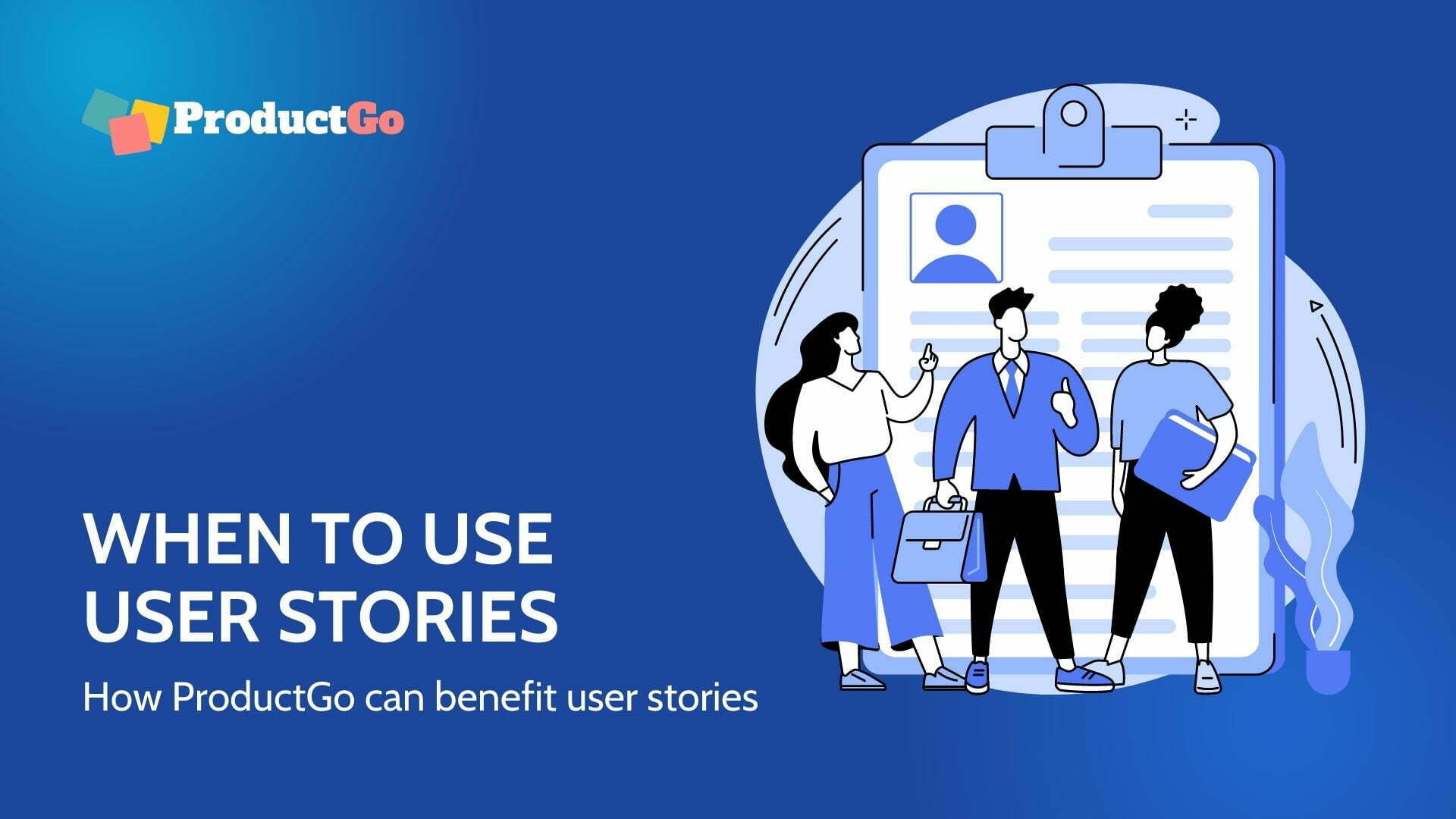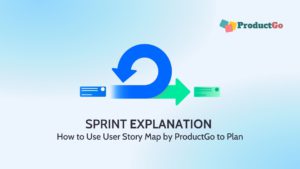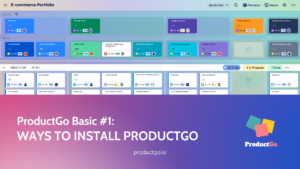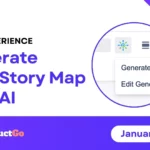Table of Contents
Introduction
User stories are an essential part of agile development, and they can help teams stay focused on the needs of their users. User stories provide a way to capture user requirements in a concise, easy-to-understand format that can be used to guide product development.
ProductGo is an innovative software tool that can help teams by creating story maps and helping them visualize their user stories. With ProductGo, teams can quickly and easily create story maps that provide an organized view of all the user stories associated with a particular feature or product. This allows them to prioritize tasks and ensure they work on the right things at the right time.
What is User Stories
Explanation
User Stories is an agile development process that helps teams to focus on the user’s needs and goals. It allows teams to design and develop software with a customer-centric approach. They are short, simple descriptions of a feature told from the user’s perspective, which is used to efficiently capture the requirements of a project.
User stories give teams a better understanding of what needs to be done and help them prioritize tasks based on their importance. This helps them deliver high-quality products that meet their users’ expectations promptly.
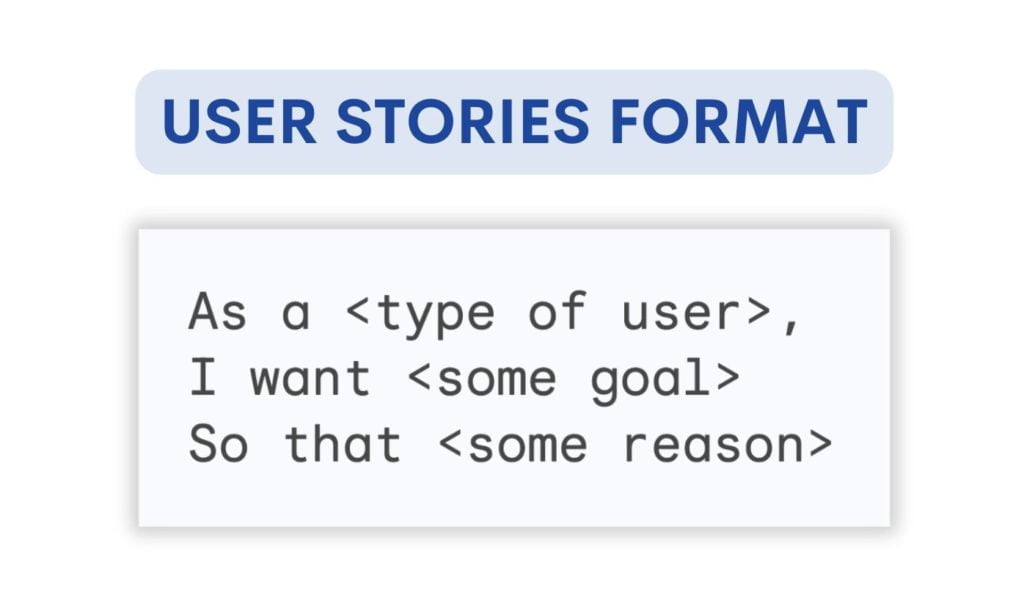
Benefits
User stories offer several benefits in the context of software development. Here are some key advantages:
- Focus on the user. It is written from the user’s perspective, which helps ensure that the software is developed with their needs in mind.
- Break down large projects into smaller tasks. It can be used to break down large software projects into smaller, more manageable tasks. This makes it easier to plan and track the progress of the development process.
- Improve communication and collaboration. It requires cooperation between the product owner, developers, and testers. This helps to ensure that everyone is on the same page and that the software is developed in a way that meets the needs of all stakeholders.
- Increase transparency. It is written in a simple and easy-to-understand format. This makes it easy for everyone to see what is being developed and why.
- Foster creativity and innovation. It provides a framework for users to share their ideas and feedback. This can help to foster creativity and innovation in the development process.
By leveraging these key benefits, organizations can enhance the software development process, deliver user-focused solutions, and achieve higher customer satisfaction.
When to use User Stories
Use cases
User stories are a valuable tool for agile development teams. They can be used to communicate requirements to stakeholders, identify and prioritize features, plan and track development progress, and reduce the risk of scope creep.
User stories can be used in any software development project, but they are handy for complex projects with many stakeholders.
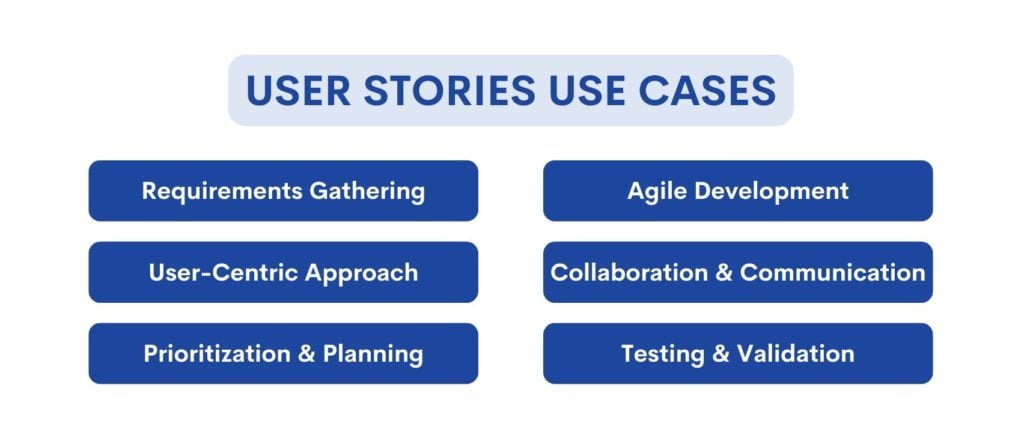
User stories are used in the following situations:
- Requirements Gathering. It is ideal for capturing and eliciting requirements from stakeholders, focusing on the needs and goals of end users.
- Agile Development. It is a fundamental part of Agile methodologies, enabling iterative and incremental development, continuous feedback, and frequent delivery.
- User-Centric Approach. When the development process aims to prioritize the user’s perspective and deliver user-focused solutions, user stories are highly effective.
- Collaboration and Communication. It promotes collaboration and shared understanding among development teams, stakeholders, and end users. They facilitate effective communication and align expectations.
- Prioritization and Planning. It helps prioritize features or functionalities based on their value to users. They enable development teams to plan and deliver high-value features early in the development cycle.
- Testing and Validation. It serves as the foundation for testing and validation. They provide clear criteria to ensure that implemented functionality meets the intended goals and benefits described in the story.
These user stories are a valuable tool in Agile development, fostering collaboration, communication, and a user-centered approach throughout the software development lifecycle.
Stakeholders
User stories bring benefits to various stakeholders involved in the software development process. Here’s a breakdown of who benefits from user stories:
- End Users. It prioritizes the needs and goals of end users, ensuring that the developed software meets their requirements and provides a positive user experience.
- Product Owners. It helps product owners effectively communicate and prioritize features based on user value. They provide a clear understanding of the desired functionality and guide decision-making.
- Development Teams. It provides development teams with a clear and concise description of desired functionality. They enable teams to focus on delivering features incrementally, foster collaboration, and promote shared understanding.
- Stakeholders. It facilitates effective communication between stakeholders and development teams. They provide a shared language for discussing requirements, aligning expectations, and ensuring that the software meets the desired goals and benefits.
By embracing user stories, all stakeholders involved in the software development process benefit from improved collaboration, a user-centered approach, clear communication, effective prioritization, and successful software delivery that meets user needs.
How ProductGo can benefit user stories
ProductGo is a revolutionary tool designed to enhance your Agile software development process by seamlessly integrating Story Mapping into Jira. With its user-friendly interface and powerful features, ProductGo streamlines the creation and management of User Story Maps, providing an array of benefits to effectively leverage the power of user stories.
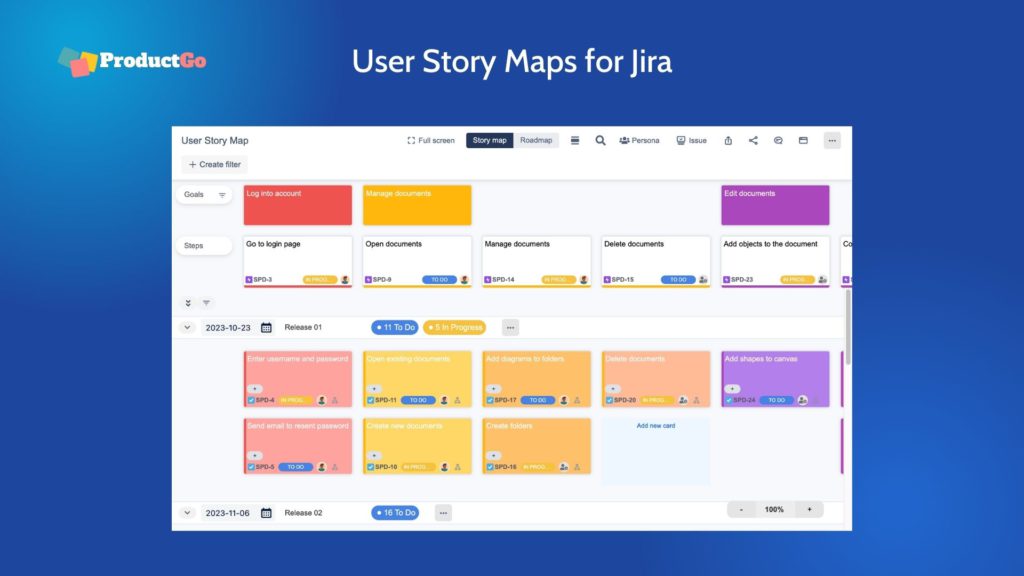
Benefits of ProductGo for User Stories:
- Effortless User Story Mapping. ProductGo simplifies creating User Story Maps directly within Jira, eliminating the need for external tools or manual workarounds. With intuitive drag-and-drop functionality, you can easily organize, prioritize, and visualize user stories on a dynamic story map.
- Visual Clarity and Collaboration. The visual representation of User Story Maps in ProductGo offers a clear and holistic view of your project’s user stories and their relationships. This visual clarity fosters effective collaboration and shared understanding among team members, stakeholders, and product owners, ensuring everyone is on the same page.
- Streamlined Requirements Gathering. ProductGo enables you to capture and refine user requirements directly within the Story Map, simplifying the requirements-gathering process. You can effortlessly add, edit, and prioritize user stories, define acceptance criteria, and attach relevant documents, keeping everything organized in one place.
- Enhanced Prioritization and Planning. With ProductGo, you can quickly prioritize user stories based on their importance and value. The intuitive interface allows you to assign story points, estimate effort, and establish dependencies, empowering you to make informed decisions and plan sprints more effectively.
- Flexible Iterative Development. ProductGo supports the iterative nature of Agile development by enabling you to break down user stories into smaller, manageable tasks and subtasks. This flexibility allows you to adapt and adjust your development approach as you progress, ensuring your software evolves based on user feedback and changing requirements.
- Seamless Jira Integration. You can seamlessly integrate ProductGo into your workflow as a Jira user. User Story Maps created in ProductGo synchronize bidirectionally with Jira, providing real-time updates and maintaining a cohesive development environment.
ProductGo simplifies User Story Mapping within Jira, empowering your team to collaborate, plan, and deliver software solutions that align with user needs effectively. Embrace ProductGo to streamline your Agile process, enhance user story management, and achieve greater success in delivering user-centric software.
Conclusion
In conclusion, user stories are a vital tool in agile development, capturing user requirements in a concise and user-centric format. They facilitate effective communication, prioritize tasks, and ensure software solutions meet user needs. By seamlessly integrating User Story Mapping into Jira, ProductGo enhances the benefits of user stories, providing a streamlined approach to visualize, prioritize, and manage them. With ProductGo, teams can collaborate more efficiently, adapt to changing requirements, and deliver user-focused software solutions that drive success in the agile development process.

